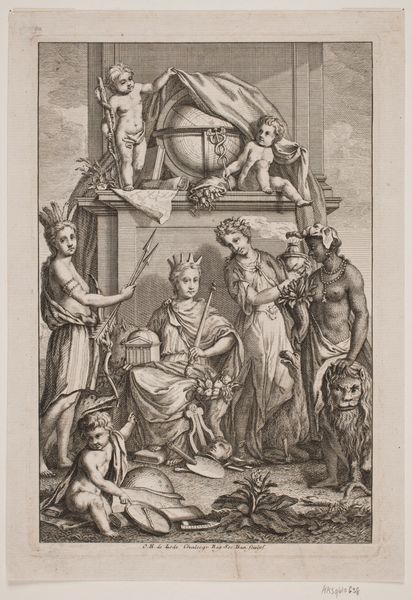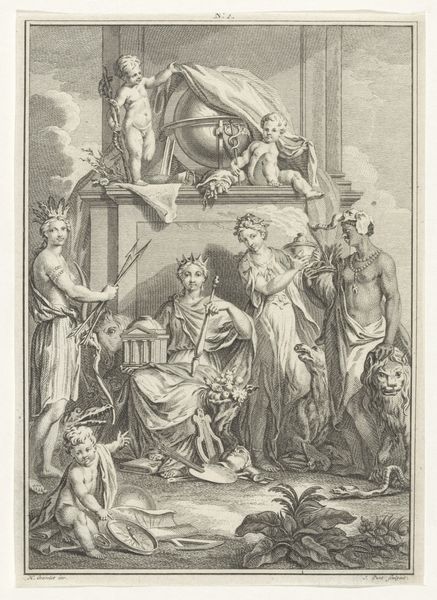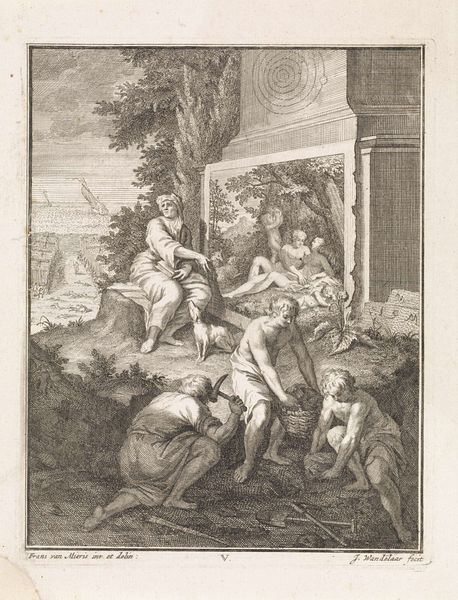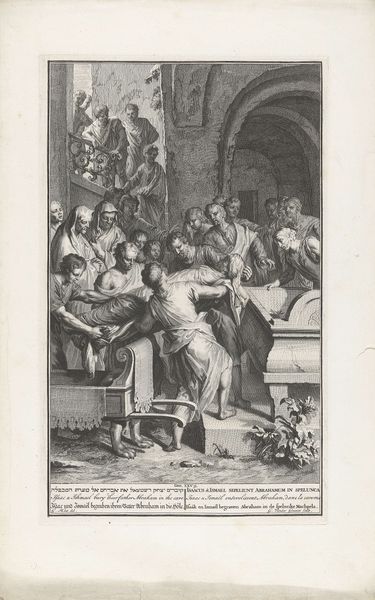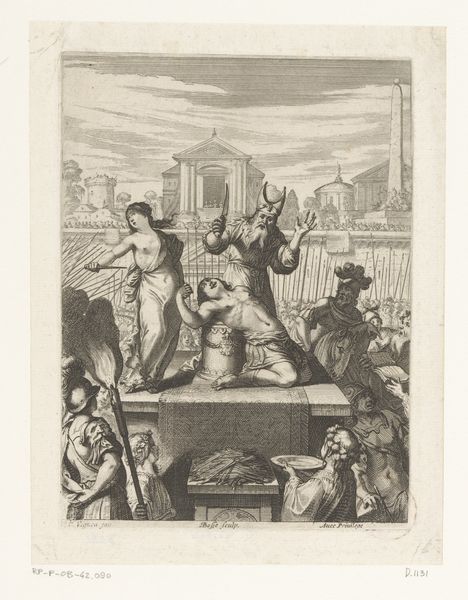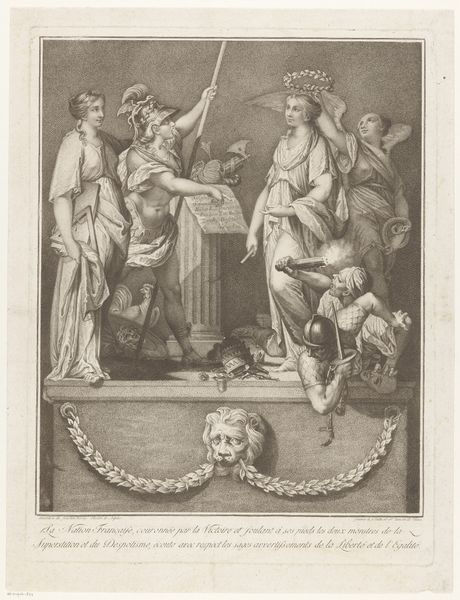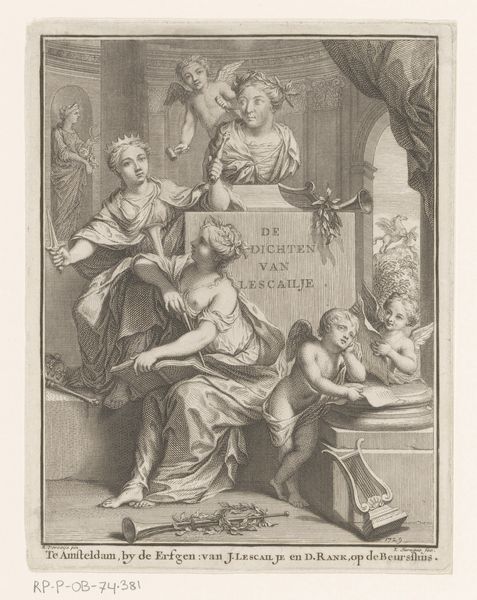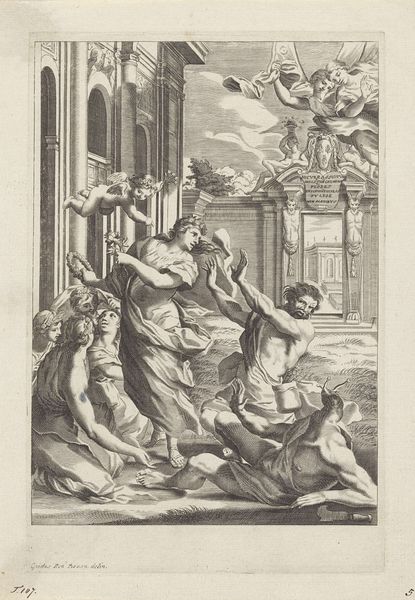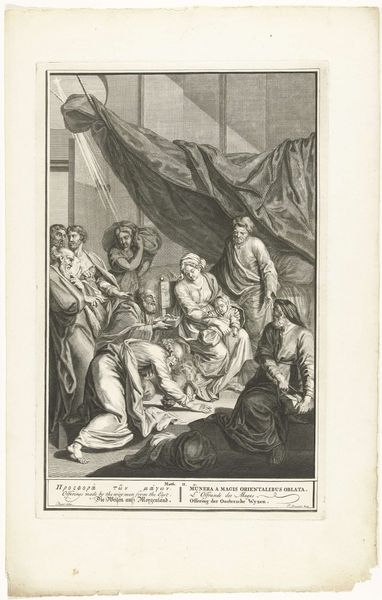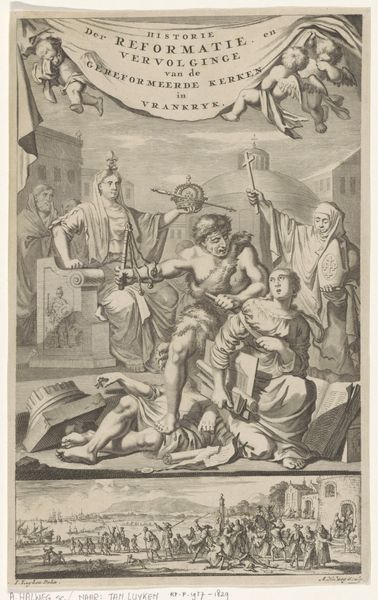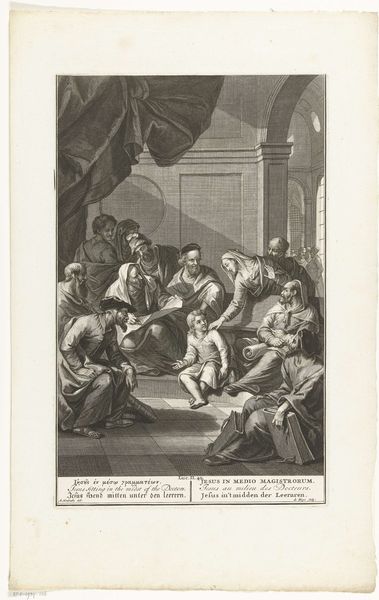
print, engraving
#
narrative-art
#
baroque
# print
#
caricature
#
figuration
#
pencil drawing
#
history-painting
#
engraving
Dimensions: height 174 mm, width 106 mm
Copyright: Rijks Museum: Open Domain
Curator: We are looking at "Adoration of the Shepherds" by Pierre Daret, an engraving dating back to 1646. It’s part of the Rijksmuseum's collection. Editor: The composition is quite dynamic, I’m immediately drawn to the contrast between the coarse textures of the shepherd’s clothing and the idealized smoothness of the figures surrounding the Christ child. It has such raw yet devotional energy! Curator: Exactly. The medium itself, engraving, involved careful labor. Consider the metal plate Daret used; the precision required to render the lines we see before us using a burin. How do these repetitive motions speak to the representation of laborers depicted here? Editor: That contrast really enhances the symbolism. You've got these rough, working-class figures coming to worship an infant swaddled but illuminated like a beacon. Their weariness becomes a signifier of humble reverence, juxtaposed against what's to come. Curator: I wonder about Daret’s choices regarding clothing too, or perhaps their absence. These aren’t necessarily the garments of biblical shepherds. What social conventions surrounding dress are being both followed and ignored in the 17th Century? Editor: It’s almost like the artist wants us to feel both the divine nature of the event and the earthly context. We see those ancient, crumbling columns, juxtaposed with what appear to be very contemporary laborers visiting Jesus, the babe in the manger. It grounds the scene. This iconography offers a timeless interpretation. Curator: And did Daret himself carve the matrix used for production? That’s crucial when discussing the context of the engraving. The labor creates value. Did the method enhance accessibility? Editor: It certainly distributed the message more broadly, bringing the iconography of the adoration to a wider audience through accessible prints. Curator: These questions regarding process matter—I’m drawn to consider how the availability of the engraving itself influences its interpretation. Editor: I find I am more in awe of how such graphic skill highlights and focuses a spiritual message, creating the impact we still appreciate centuries later.
Comments
No comments
Be the first to comment and join the conversation on the ultimate creative platform.
